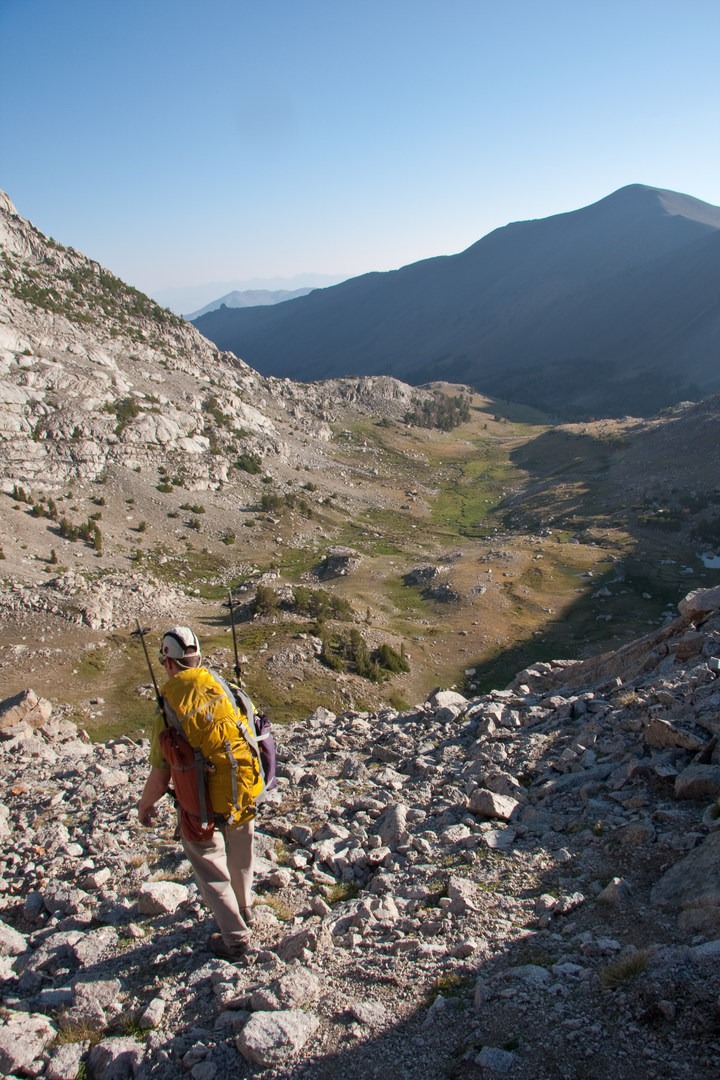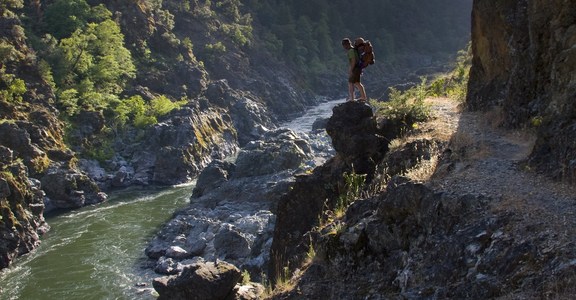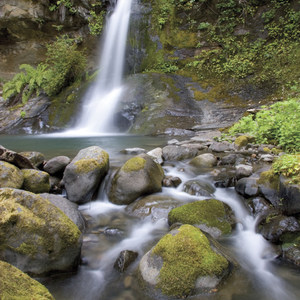Fall Creek Canyon Overview
Fall Creek Canyon is a tributary of the Wildhorse Creek Canyon complex that drains the north side of the 12,000-foot Pioneer Mountain Crest. Though Wildhorse itself is longer and bigger than Fall Creek, a four-wheel drive road climbs nearly to the head of that canyon. The Fall Creek headwaters, by contrast, can only be reached via a 7-mile trail, making it feel much more remote than the Wildhorse Cirque.
The entire Wildhorse complex has experienced extensive mountain glaciation. The rivers of ice draining Wildhorse and Fall Creek merged together and extended down canyon to the mouth of the East Fork of the Big Lost River. At times the Wildhorse Glacier dammed the East Fork and formed a massive glacial lake that backed all the way up to the Copper Basin glaciers.
The Fall Creek Canyon drains a series of stunning ridgelines above 11,000 feet. The huge U-shaped canyon captures several additional tributaries that climb into alpine meadows and cirques with beautiful sapphire lakes.
The Left Fork of Fall Creek
The Left Fork of Fall Creek is a remote and lightly-visited canyon. The trail is easy to follow from Fall Creek proper. It climbs through a dense forest and then traverses along the north side of the canyon to an unmarked junction with the Highline Trail #059. The walk to the head of the Left Fork Canyon is an interesting journey through an ecologic transition from a sage and willow landscape to high-alpine grassy meadows. The trail fades into the landscape around 9,400 feet, but the open terrain makes it easy to navigate into the alpine basin above.
Another transition also happens around 9,400 feet as hikers cross the Wildhorse Detachment Fault, marking the transition from darker sedimentary rocks into more resistant granites, gneiss, and meta-sedimentary quartzites and sandstones. The change is obvious not only in the color of the rock (from dark to light) but also in the skyline ridges overhead. The less resistant sedimentary rocks lower in the canyon have been eroded into relatively smooth ridgelines. South of the Wildhorse Fault, however, the ridges bristle with needles and spires of the granites and gneisses.
The final (off-trail) climb into the beautiful grassy basins above 9,800 feet is steeper, partly due to the now more resistant rocks underfoot. Once the terrain levels out, hikers can romp across gorgeous alpine meadows with spectacular granite ridges and peaks towering in all directions.
Additional Adventures
There are no trails that link out of the Left Fork of Fall Creek, though it is possible to climb to the north shoulder of Altair Peak and down the west ridge to connect to Surprise Valley or the Betty Lake/Broad Canyon Trails.
Off-Trail Hiking
The valley accesses several notable peak climbs including the east ridge of Pegasus Peak (11,736), the granite ridges east of Point 10,620, the north face/north ridge of Altair Peak (11,825), and a meandering route with a loose scree crux up the west face/north ridge of Pyramid Peak.
Technical Climbing
In addition to the non-technical off-trail scrambles, there is some potential for technical routes to be developed up the Left Fork of Fall Creek. The most promising is the east ridge of Peak 10,620, which lies between Pegasus and Altair Peaks.
Climbers may find a handful of shorter routes up blocky granite slabs on the west side of the canyon.
Reference: All content excerpted from Exploring Sun Valley - A Comprehensive Guide to the Boulder, Pioneer, and Smoky Mountains by Idaho River Publications.
Logistics + Planning
Current Weather: Powered by Dark Sky







Preferable season(s)
Congestion
Parking Pass
Pros
Cons
Trailhead Elevation
Features
Suitable for
Our mission is to inspire adventure with beautiful, comprehensive and waterproof map-based guidebooks. Owner, publisher, and photographer Matt Leidecker, grew up exploring and guiding on the rivers in central Idaho. His award winning Middle Fork of the Salmon River – A Comprehensive Guide is the standard by which other river guidebooks are measured. Printed on virtually indestructible YUPO paper, IRP guides are truly unique all-in-one resources for adventure. Each book is loaded with full-color maps, stunning photographs, and information on the history, geology, and wildflowers. Visit Idaho River Publications to explore our guidebooks to the Rogue River in Oregon and the mountains of Central Idaho.
















Comments
Sign In and share them.